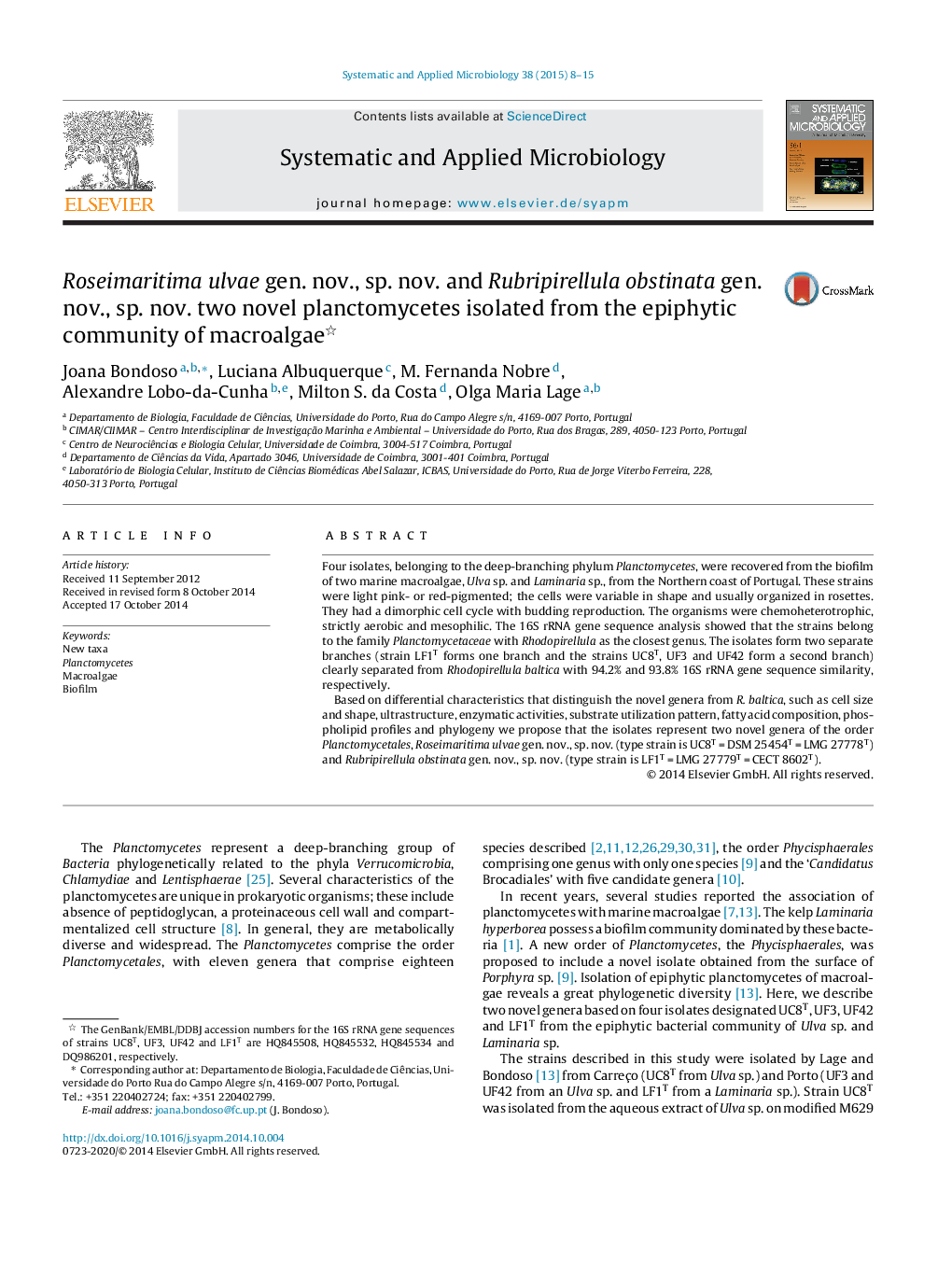| Article ID | Journal | Published Year | Pages | File Type |
|---|---|---|---|---|
| 2063035 | Systematic and Applied Microbiology | 2015 | 8 Pages |
Four isolates, belonging to the deep-branching phylum Planctomycetes, were recovered from the biofilm of two marine macroalgae, Ulva sp. and Laminaria sp., from the Northern coast of Portugal. These strains were light pink- or red-pigmented; the cells were variable in shape and usually organized in rosettes. They had a dimorphic cell cycle with budding reproduction. The organisms were chemoheterotrophic, strictly aerobic and mesophilic. The 16S rRNA gene sequence analysis showed that the strains belong to the family Planctomycetaceae with Rhodopirellula as the closest genus. The isolates form two separate branches (strain LF1T forms one branch and the strains UC8T, UF3 and UF42 form a second branch) clearly separated from Rhodopirellula baltica with 94.2% and 93.8% 16S rRNA gene sequence similarity, respectively.Based on differential characteristics that distinguish the novel genera from R. baltica, such as cell size and shape, ultrastructure, enzymatic activities, substrate utilization pattern, fatty acid composition, phospholipid profiles and phylogeny we propose that the isolates represent two novel genera of the order Planctomycetales, Roseimaritima ulvae gen. nov., sp. nov. (type strain is UC8T = DSM 25454T = LMG 27778T) and Rubripirellula obstinata gen. nov., sp. nov. (type strain is LF1T = LMG 27779T = CECT 8602T).
